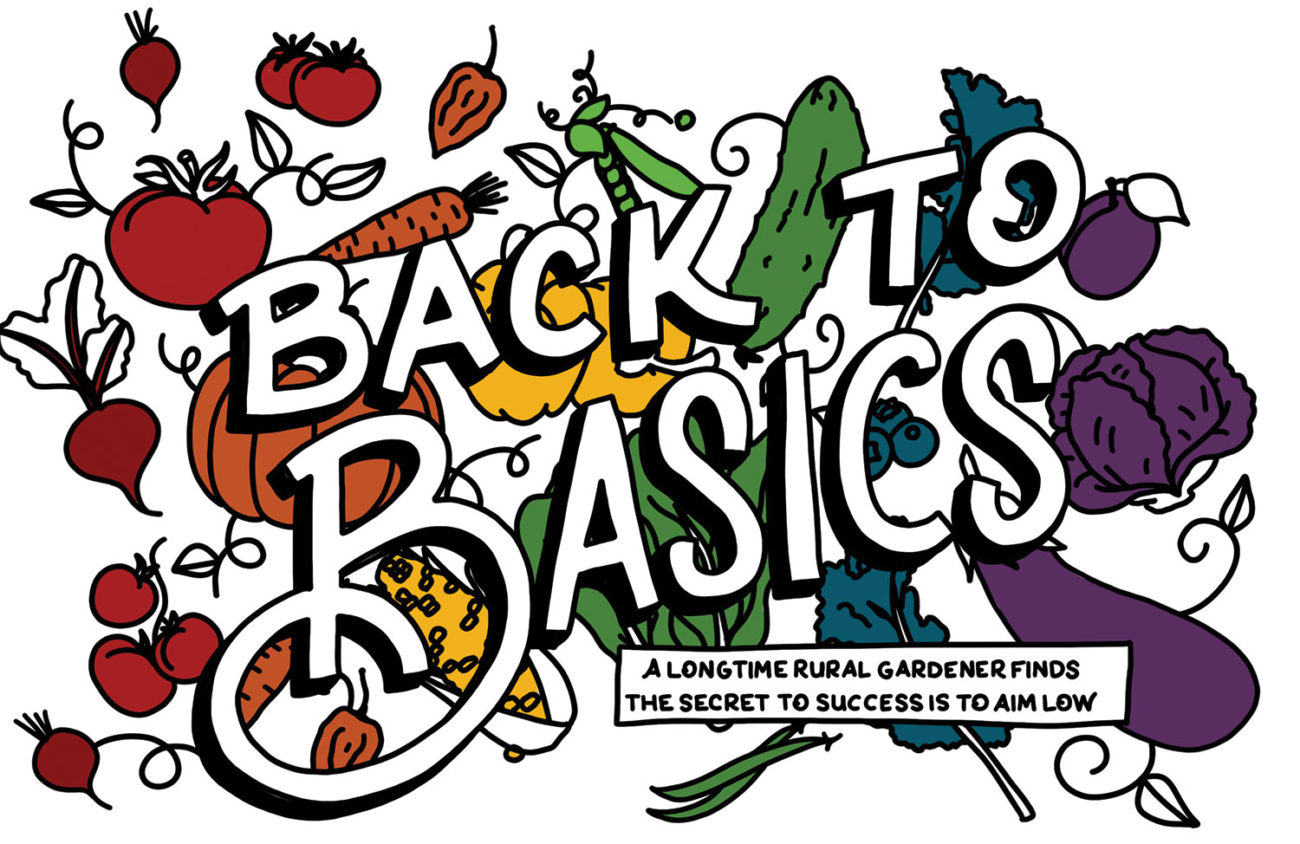Every year about this time, I look out at the garden that takes up a large swath of our property next to the house, and say to myself, “Thank God I’m not a farmer.”
It’s not that I don’t love gardening. I do. The smell of the soil, the solid, rewarding physical labor, those delicious fresh tomatoes and salad greens that appear as if by magic right outside our door. The sense of taking part in primal cycles that have set humanity’s agenda for millennia.
But let’s get real. After 36 years of working in our rural garden, I’ve come to accept that I am no expert. As far as ever becoming a farmer, I’d rather flip burgers for minimum wage than rely on the capriciousness of nature and my agronomy skills for any part of the family income. I’ve planned and planted way too many things that, ahem, didn’t work out.
What I’ve learned in those 36 years is simple: Don’t get fancy. If you want to start gardening, figure out a few basic things you really like to eat that are reliable and easy to grow — and plant and take care of them. Think green beans. Potatoes. Lettuce. Onions. Garlic. Radishes. Tomatoes and maybe a few peppers and eggplants in case summer actually arrives. Cabbage. Turnips. Carrots. Squash and cucumbers, and perhaps a pumpkin vine if you want pie or a jack-o-lantern come Halloween.
Meanwhile, don’t forget the easy perennials. Our blueberries, strawberries and grapes produce more food for less work than anything else in the garden. A small cluster of chives planted a decade ago now churns out enough greenery to keep our salads spicy year round.
The first thing we did when we moved into our place was mow a big patch out of the pasture — the garden plot measures 65 by 110 feet — evicting thousands of field mice that promptly moved into our house. (For details see my forthcoming opus, “How I Learned to Love Cats.”) We ringed it with a 10-foot wire fence to keep the ever-present deer out, and began tilling.
The fence works, mostly. When the fawns appear each June, some of the adventurous ones wriggle under the gate — to the consternation of their moms – and frolic in the lettuce. As it grew up, one crafty young buck learned to take a running leap, land high on the fence wire and then clamber over the top. As amazing as this was to watch, we put a temporary barricade a ways out from the fence that summer to deter his approach.
Other charming pests include raccoons, which have regularly decimated our attempts to enjoy fresh corn on the cob; gophers, which lie in wait for us to reward them with delectable green vegetable starts; and birds, which used to devour about half our berry crop before we started covering the bushes in black plastic netting, a fussy but effective fix.
Next problem: soil. Our local native soil really, really sucks, consisting as it does of two inches of poor quality loam on top of a foot of cold, heavy, wet gray clay. Raised beds are a necessity for our hillside plot, and it only took us about 10 years to realize that raised beds are much easier to maintain if you build walls around them, rather than redigging and piling up the soil every single year.
Once your beds are inside wooden frames, you begin to see how much soil disappears every year, leached out by rain or silently consumed by the growth of your crops. The solution is a big compost pile, which sits just outside the garden and serves as a convenient salad bar for any deer lacking the gumption to tackle the fence.
Perhaps because of the freeloading deer, we don’t ever get enough compost each year to replace what’s missing from the beds, so a regular garden expense is bags of peat moss for the veggies, and bark mulch, which we purchase by the truckload, for the berries.
Gardening is really about nurturing the soil, and one of the best things we’ve done to make our lives easier is to work in the garden year round. We extend the growing season with late-season vegetables such as cabbages and greens, which you can often harvest until January or even later, and clear out beds and plant cover crops as they’re finished producing. No bed stays vacant. Crimson clover makes for supple, easy to work soil when you chop it down and turn over the soil in the spring; we also like stands of fava beans, which root deep and help keep the cold gray clay at bay. Some varieties are actually edible.
So, no, I’ll never be a farmer. I remember the summer it was cloudy every single day, and the garden gave us not a single tomato or pepper. I think of the strawberries savaged by ugly little white worms, which we realized years later could be driven off by planting garlic between the berry rows; the kiwi bushes that have never once produced a kiwi fruit; and the filbert trees that, in three decades, have given us an entire cup of filberts.
Yet, I’ll soon be planting a hill or two of my favorite potatoes, Yukon Golds, that I could certainly buy at the grocery store. But I know they’ll grow. And it’s so pleasant to walk out on a summer evening, dig my hand into the dark soil under the mound of foliage and pull up a fresh, crisp potato, ready to be rinsed, sliced and fried for dinner.
